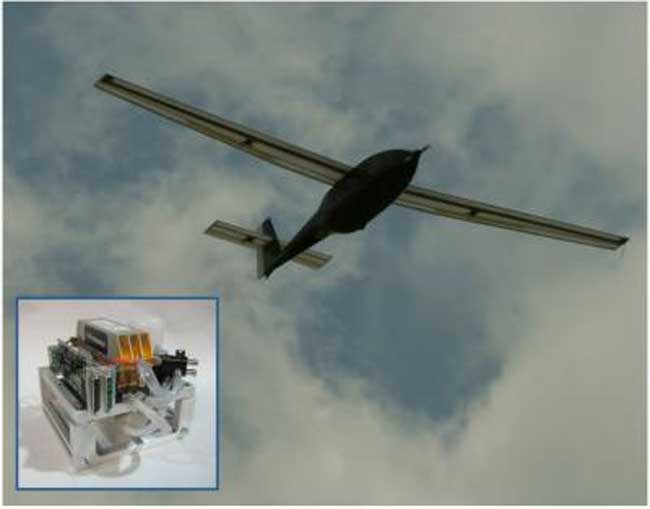Military Fuel-Cell Aircraft Sets Record

The U.S. Navy has developed a hydrogen-powered aircraft that can fly for nearly an entire day without refueling.
During a test flight last week, the Ion Tiger, an unmanned air vehicle (UAV), stayed airborne for approximately 23 hours and 17 minutes, setting an unofficial endurance record for a flight powered by fuel-cell technology.
Hydrogen fuel cells produce electricity by combining hydrogen and oxygen, with only water and heat as byproducts. The electric fuel cell propulsion system onboard the aircraft features a 550-Watt (0.75 horsepower) fuel cell that researchers say is 4 times more efficient than a comparable internal combustion engine. The Ion Tiger weighs approximately 37 pounds and carries a 4- to 5-pound payload.
{{ video="LS_091013_IONTiger" title="Ion Tiger Takes to the Skies" caption="The Ion Tiger has set an unofficial flight endurance record for a fuel-cell flying vehicle" }}
Small UAVs such as the Ion Tiger have the advantage of being nearly undetectable from the ground, allowing Navy officials to deploy the machines for a variety of specialized missions ranging from surveillance collection to communication links. And with the fuel cell system onboard the Ion Tiger, it is now possible to use UAVs to conduct long endurance missions that require a larger cruise range, reducing the number of daily launches and landings.
The military is also developing fuel-cell technology to improve the capabilities of ground, air and undersea vehicles and man-portable power for Marine expeditionary missions.
The Ion Tiger “successfully demonstrates ONR's vision to show how efficient, clean technology can be used to improve the warfighter's capabilities," said Michele Anderson of the Office of Naval Research.
Get the world’s most fascinating discoveries delivered straight to your inbox.
- Video - Ion Tiger Takes to the Skies
- Top 10 Emerging Environmental Technologies
- Top 10 Alternative Energy Bets



